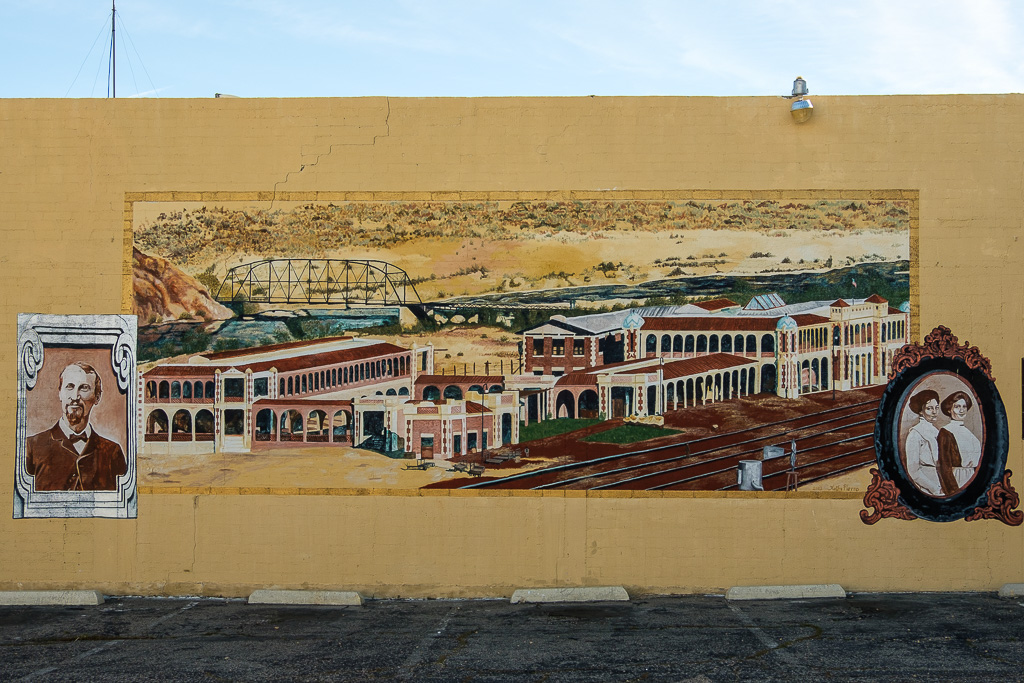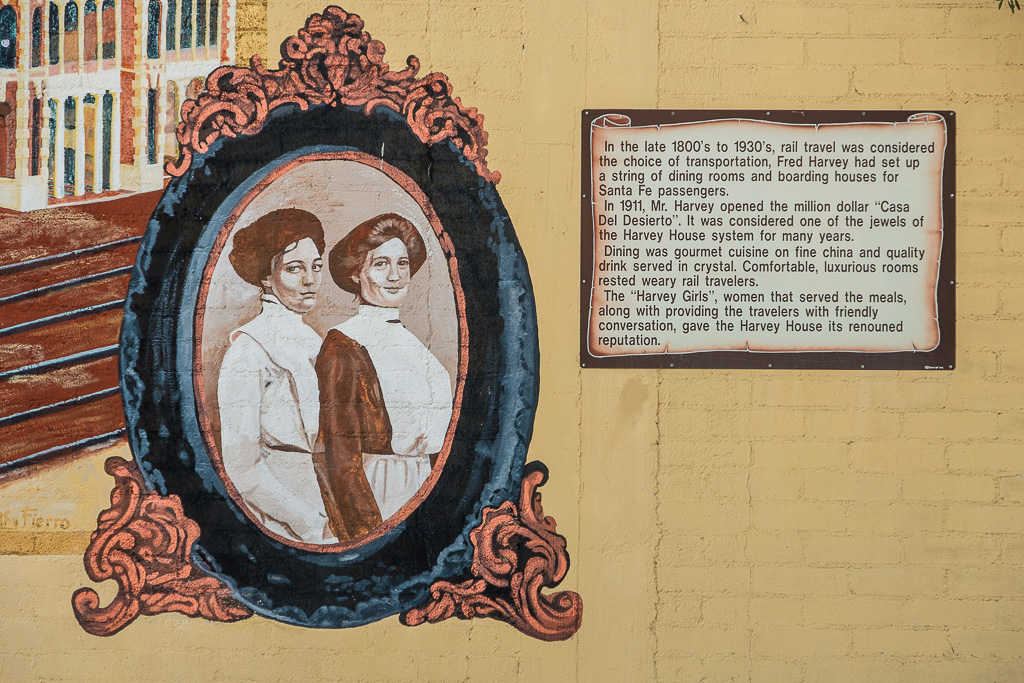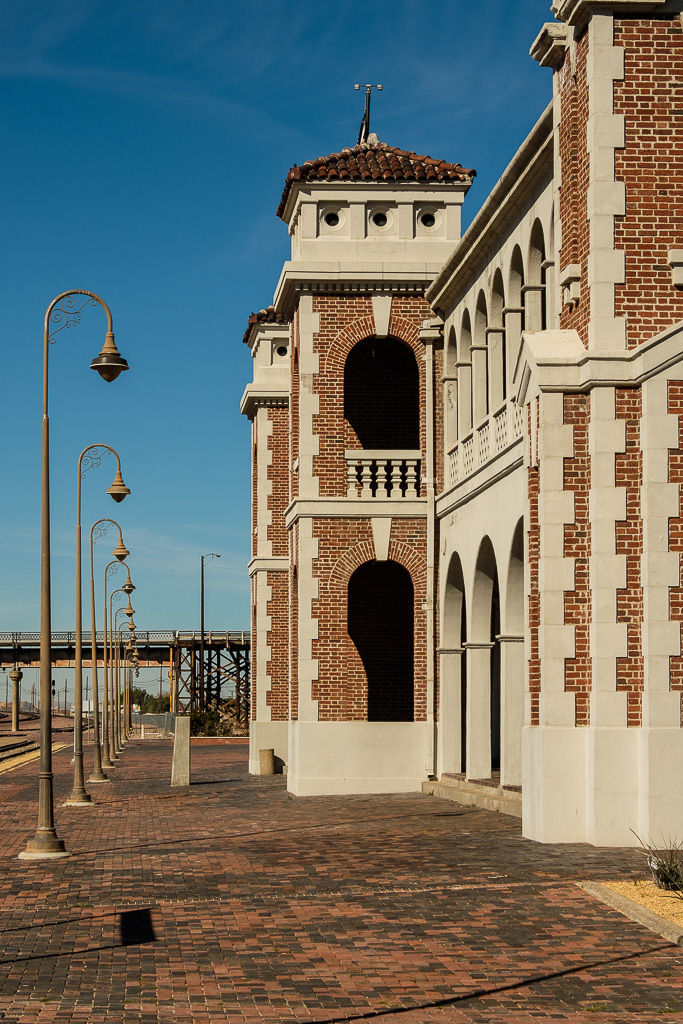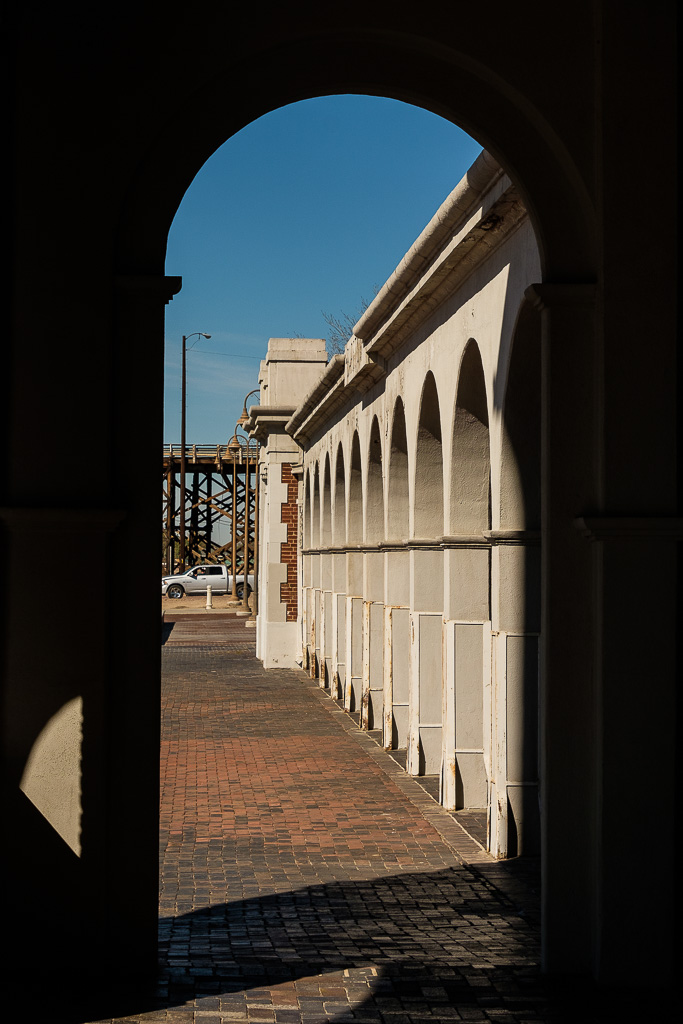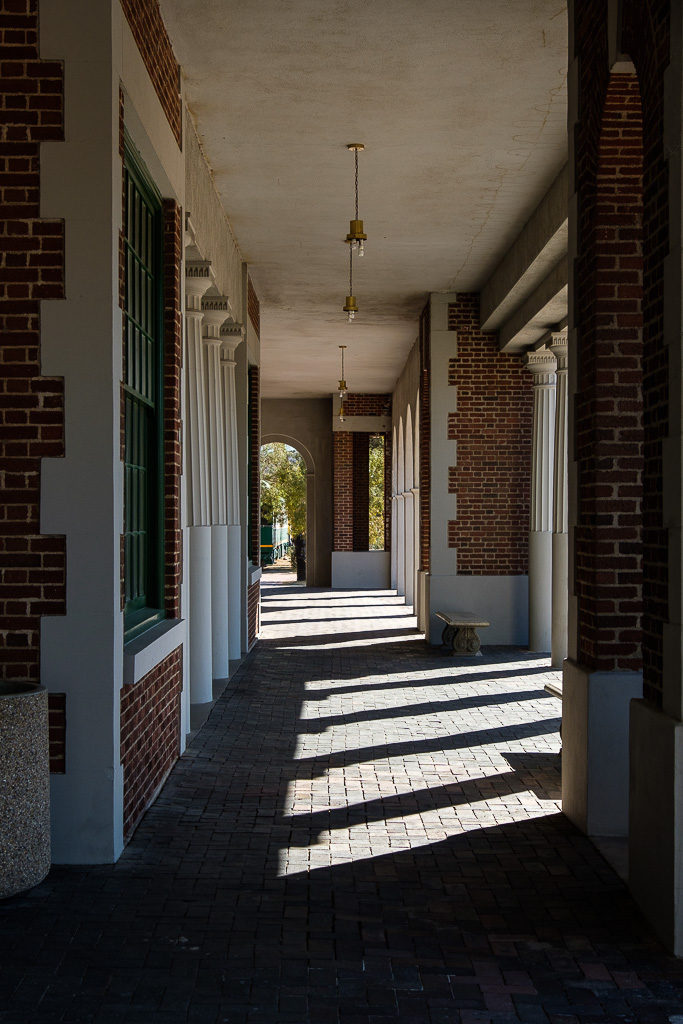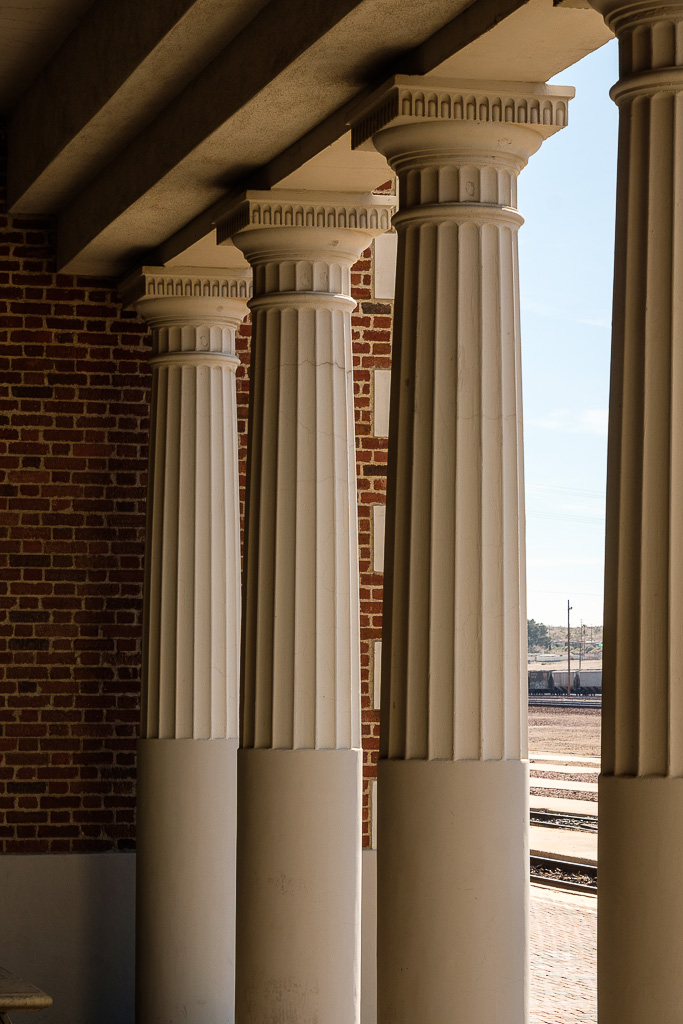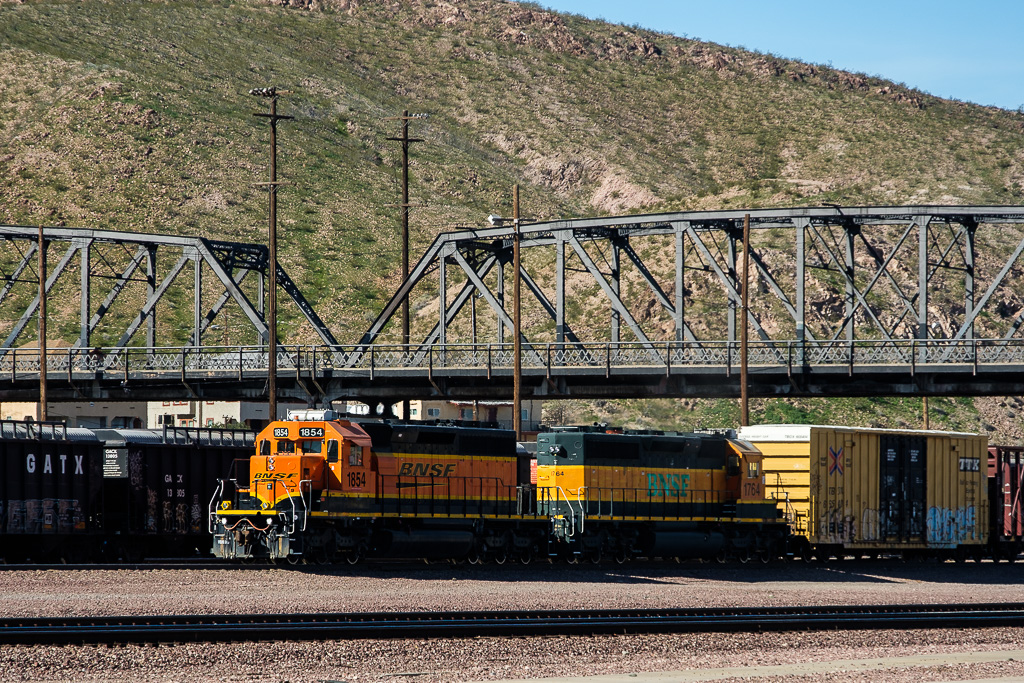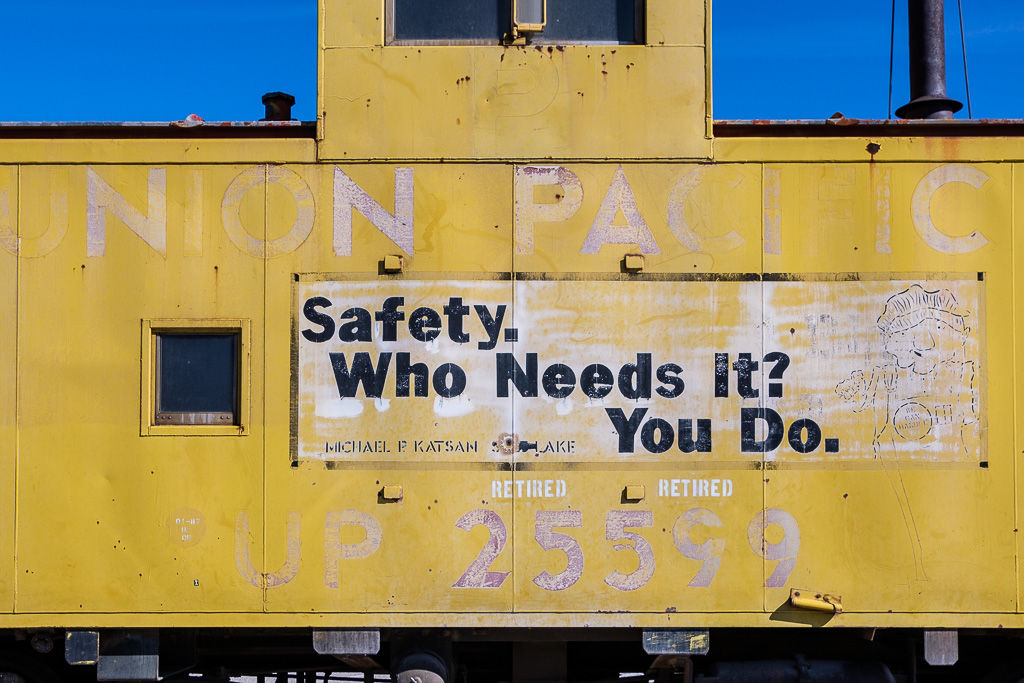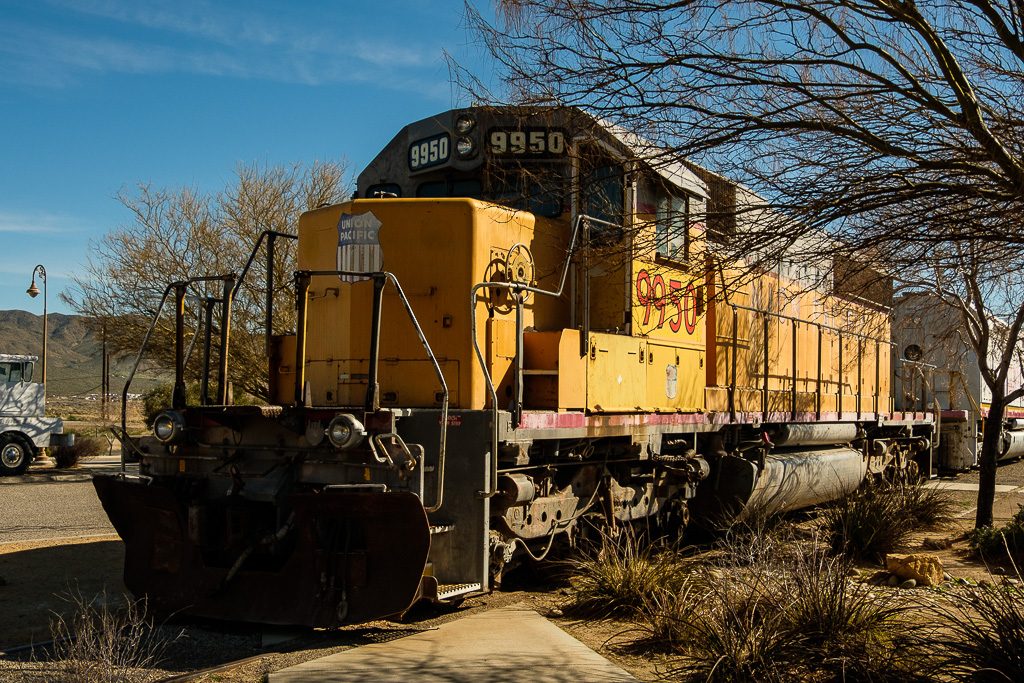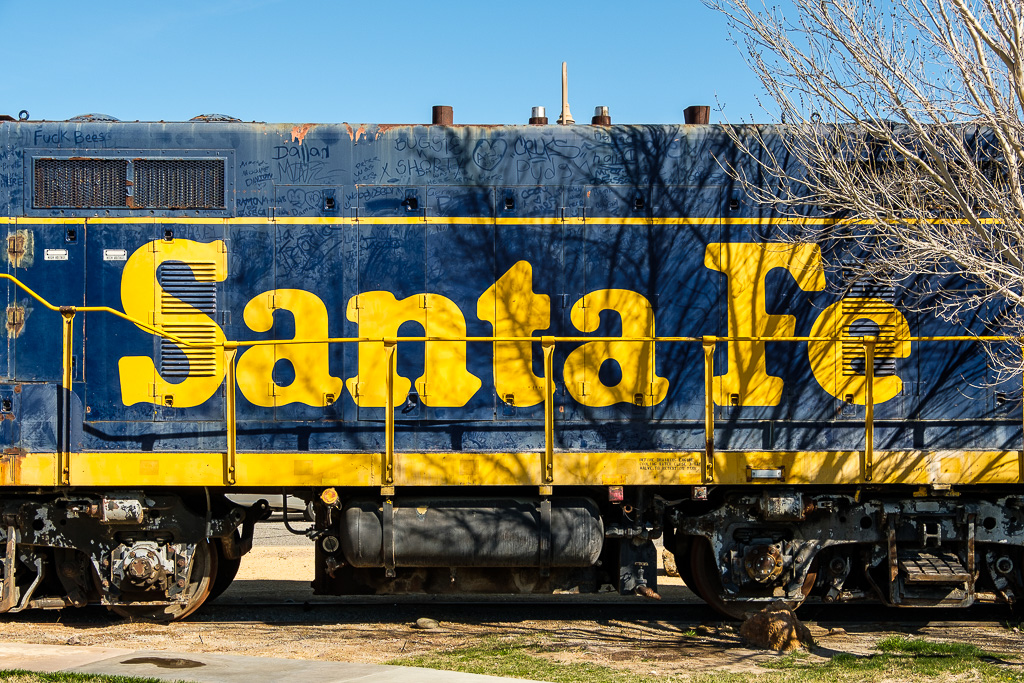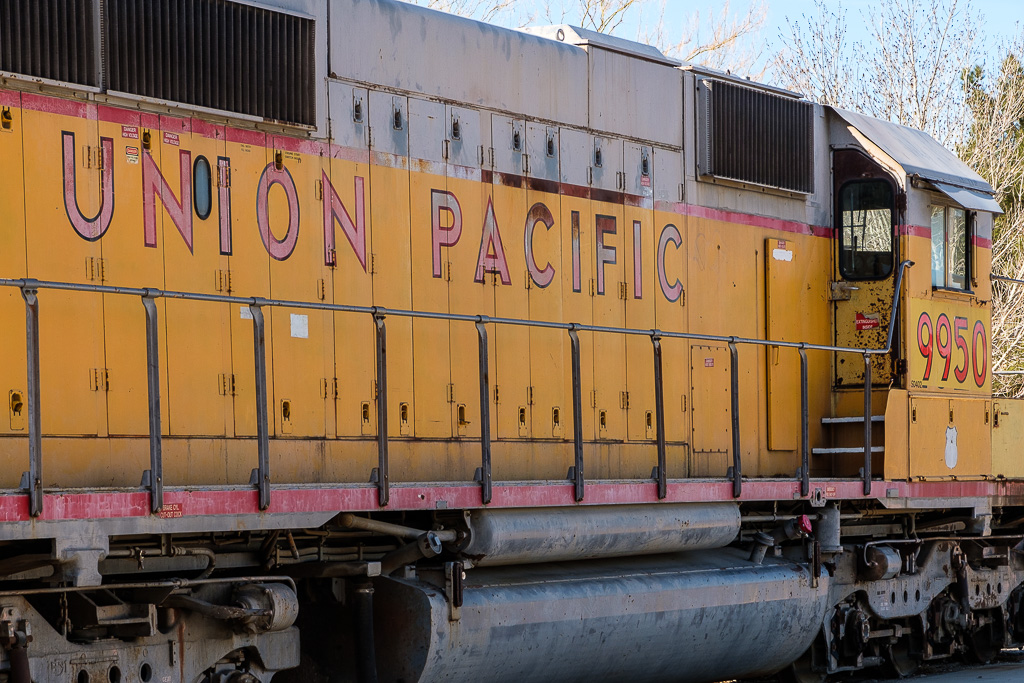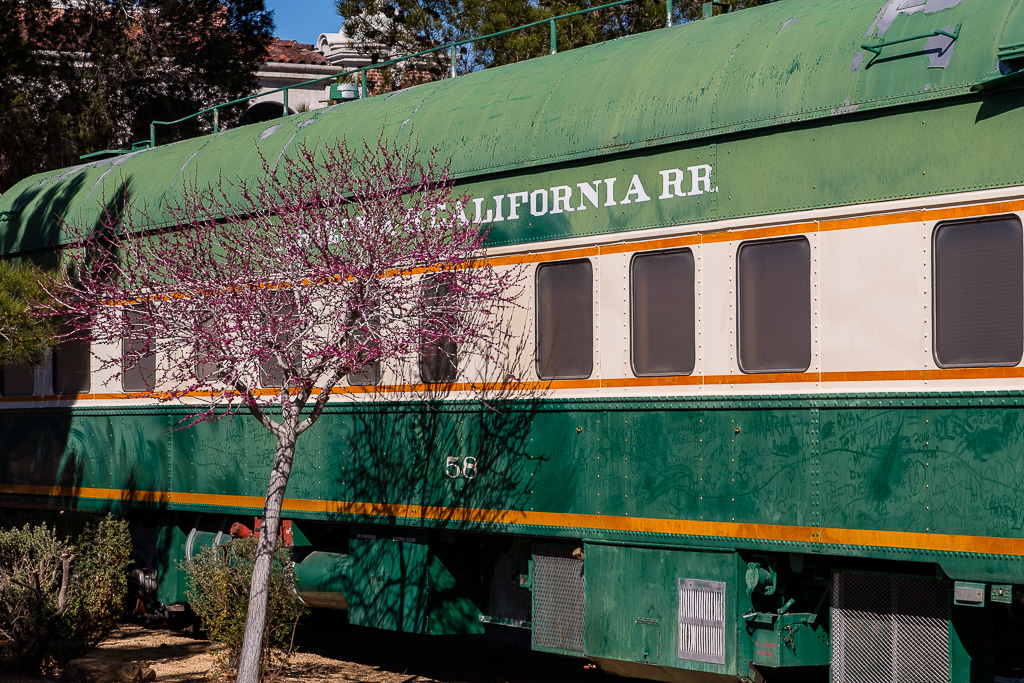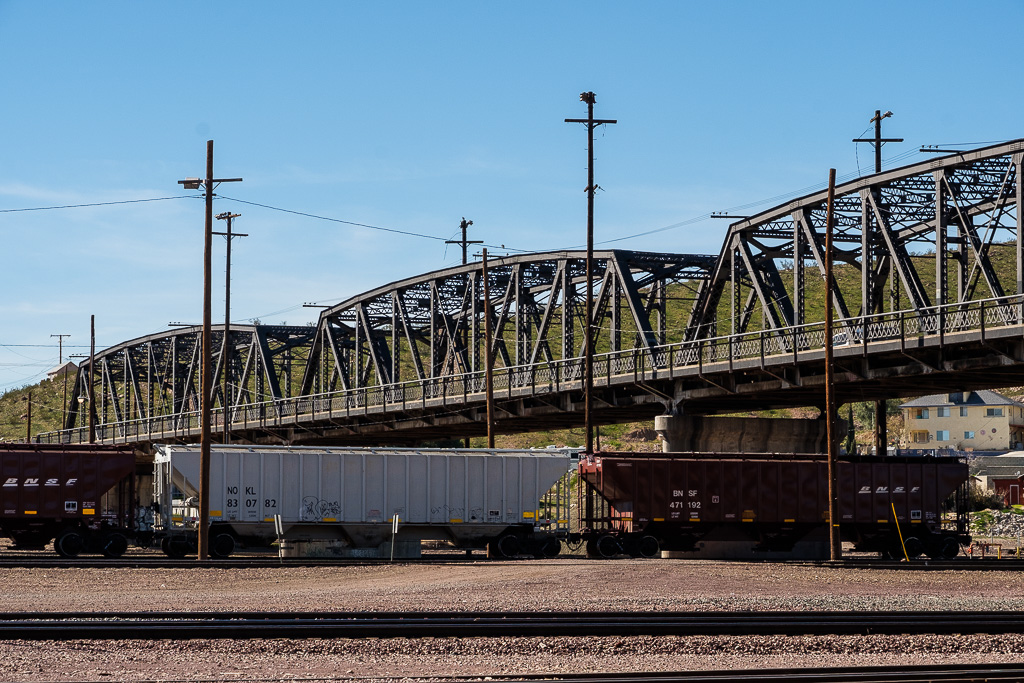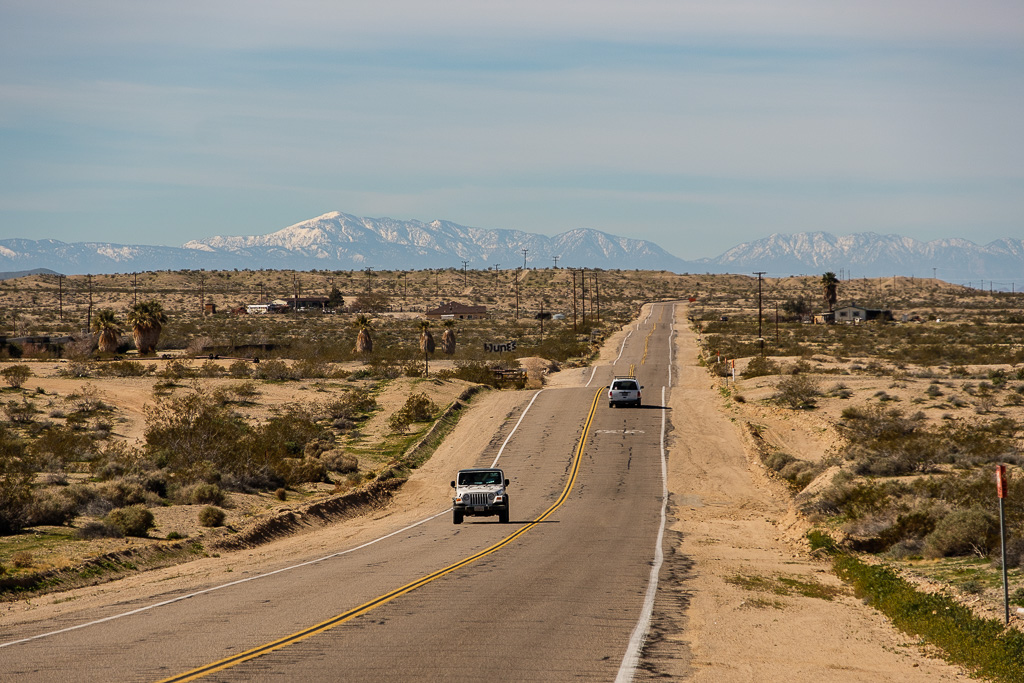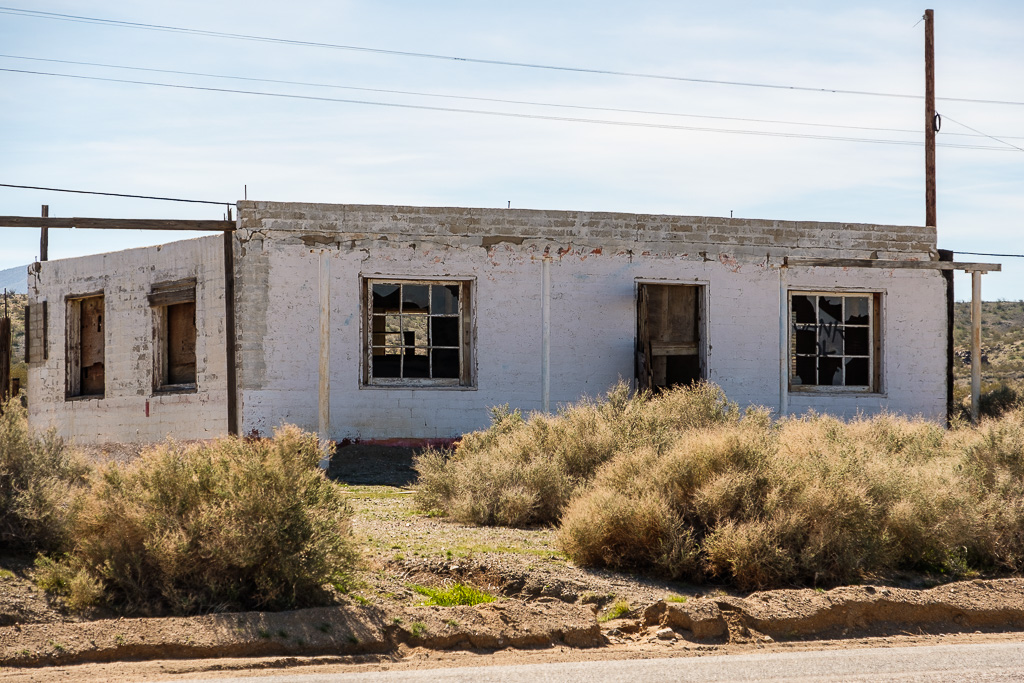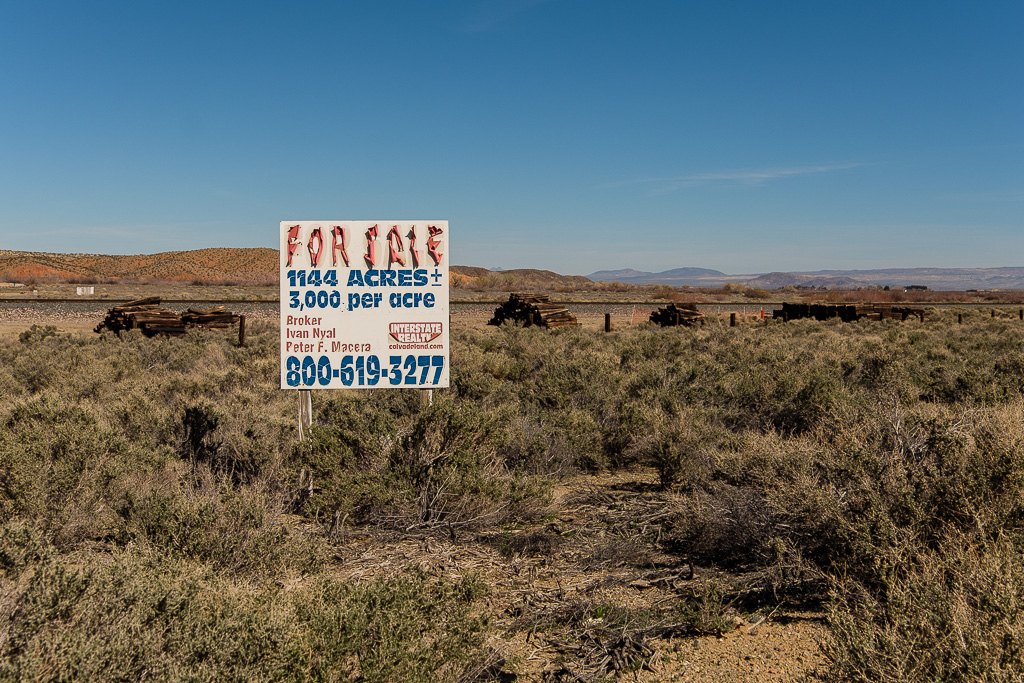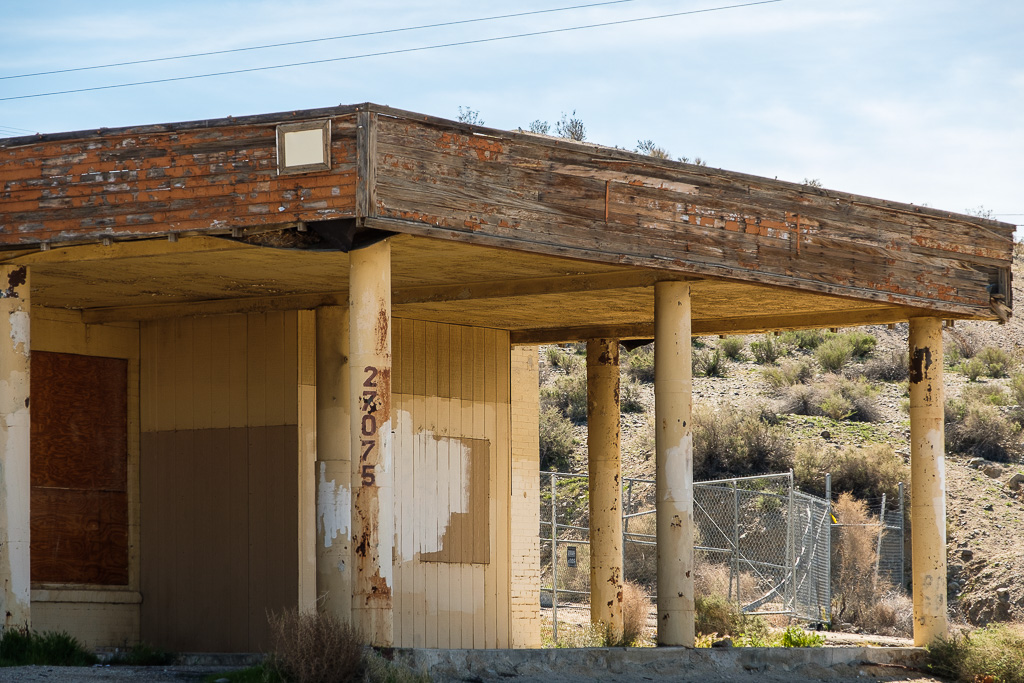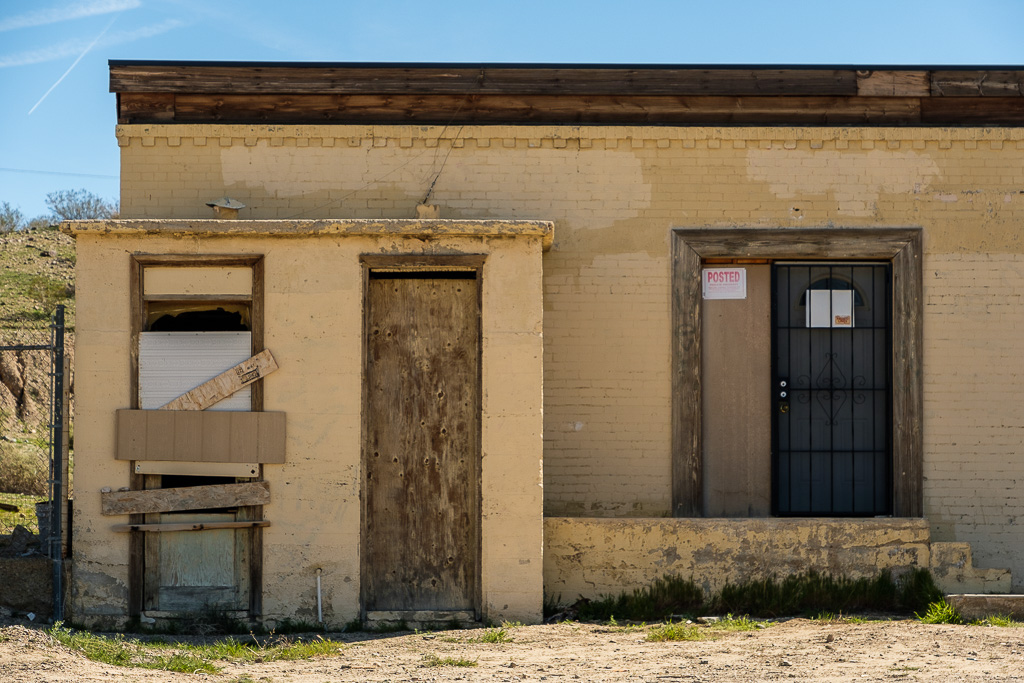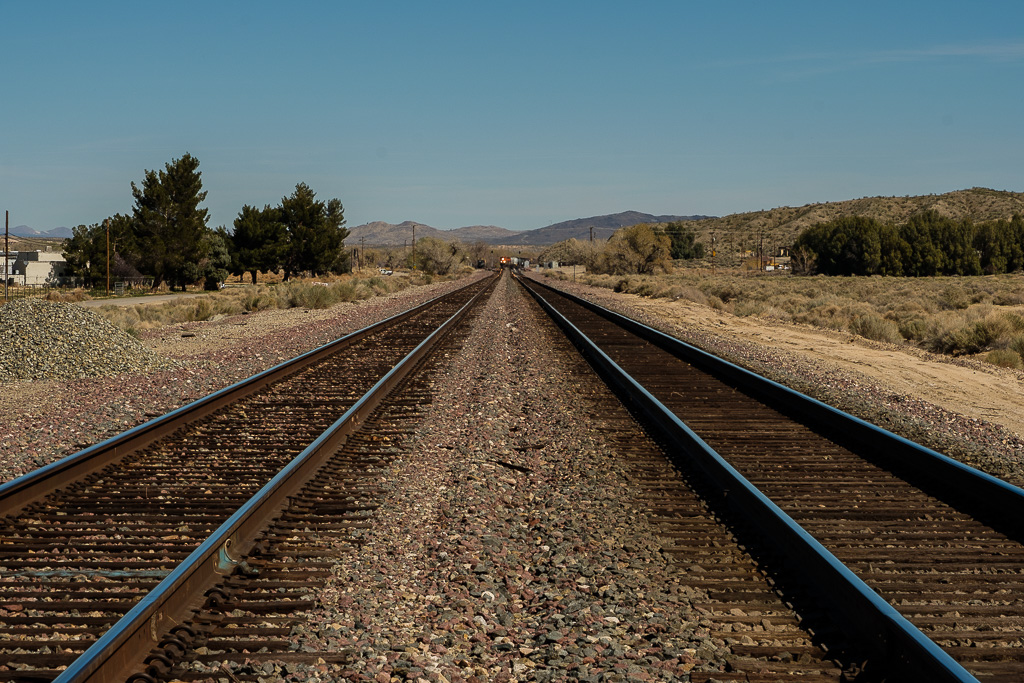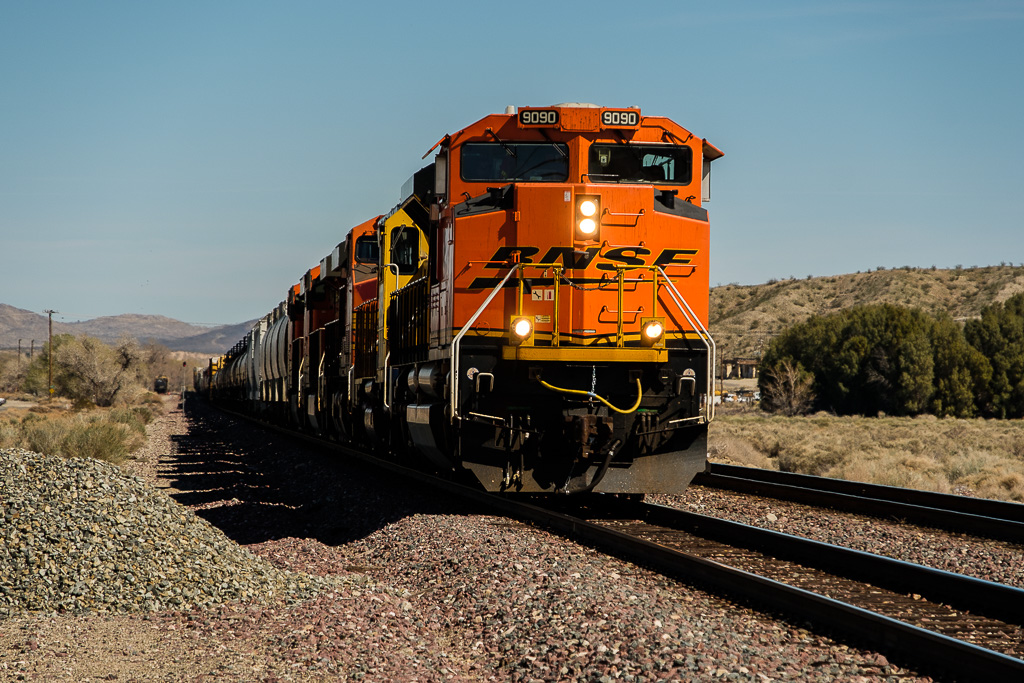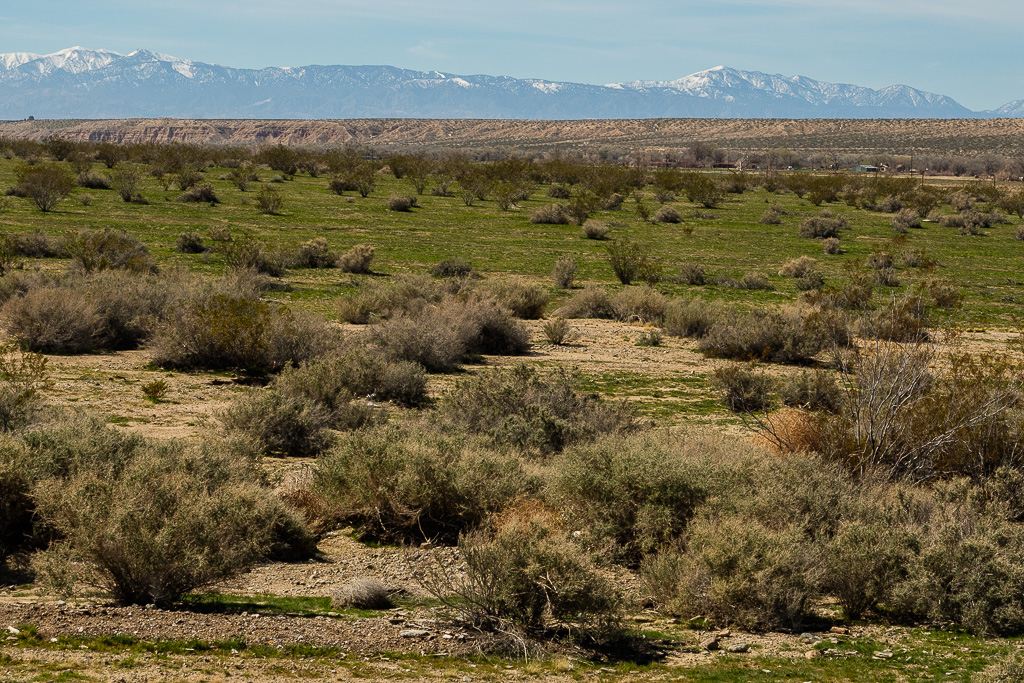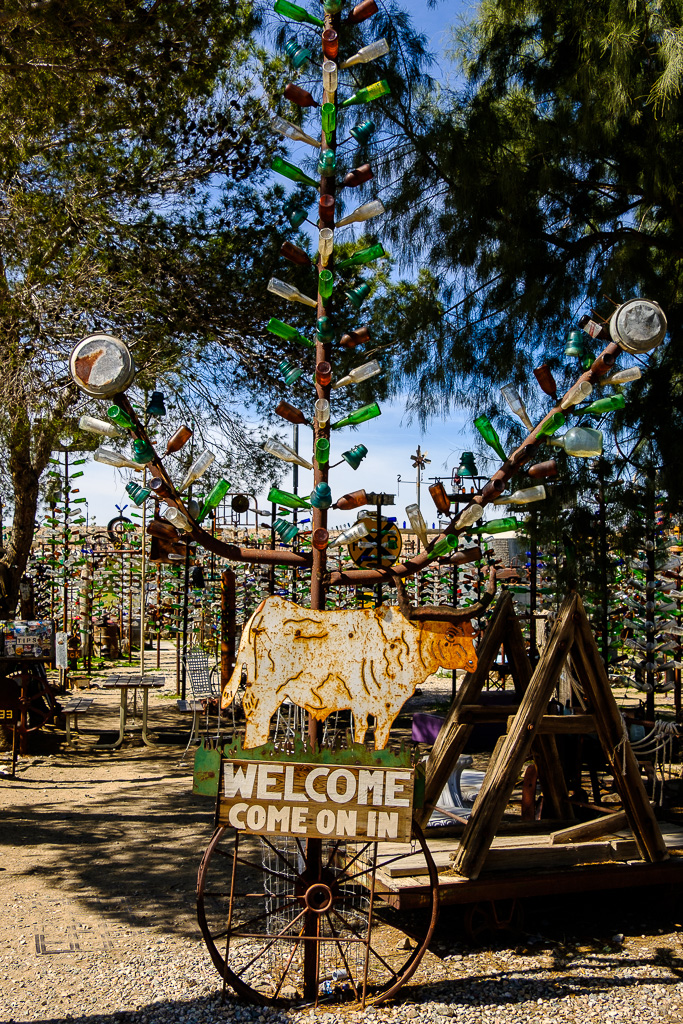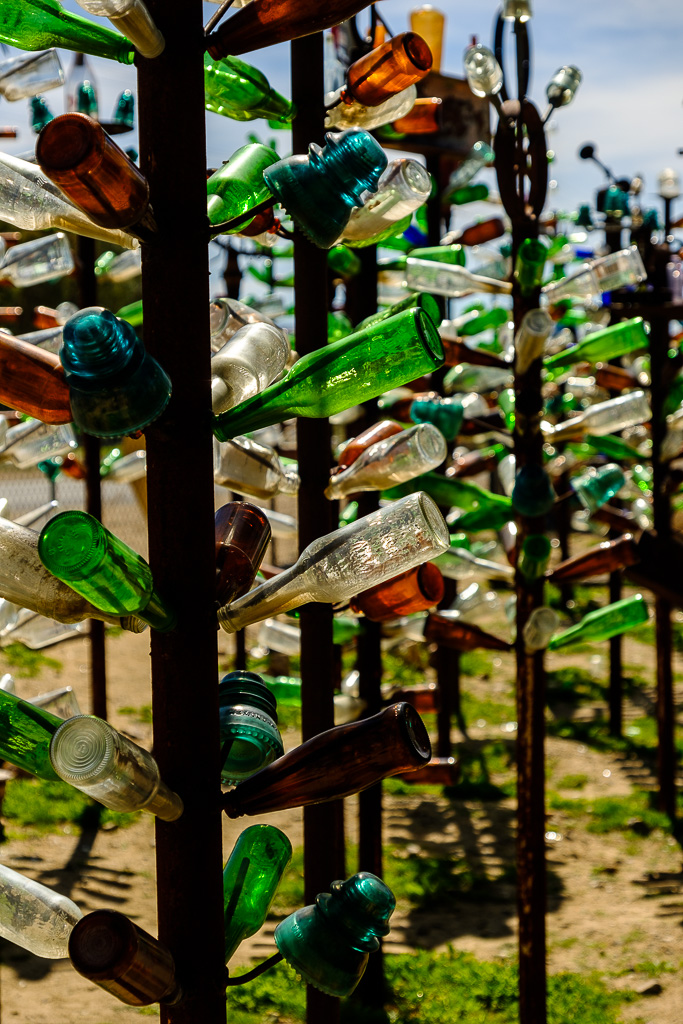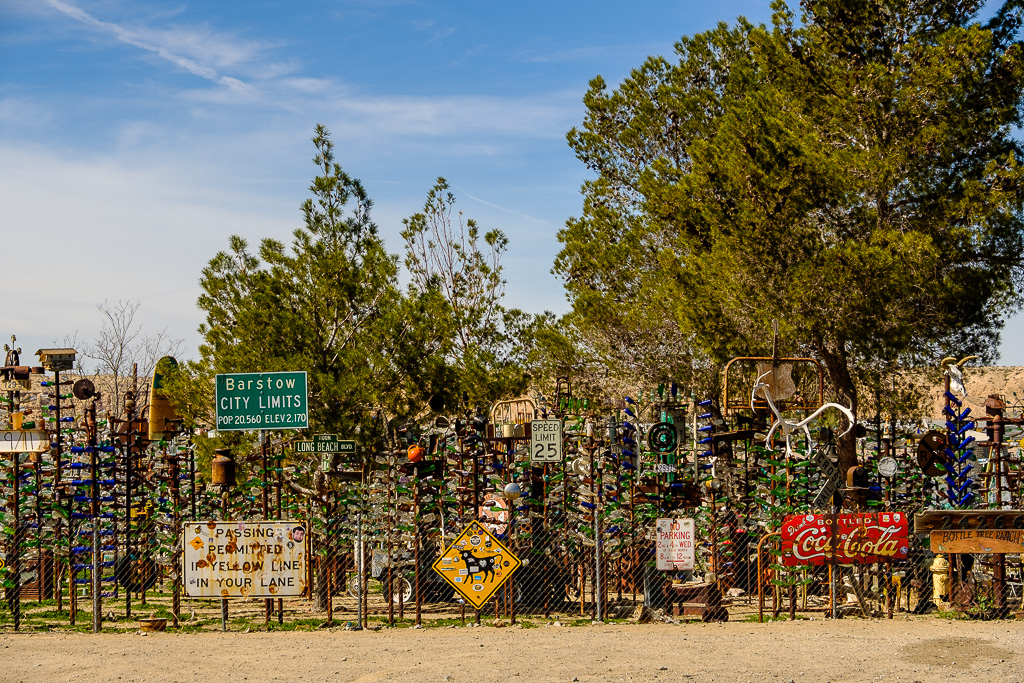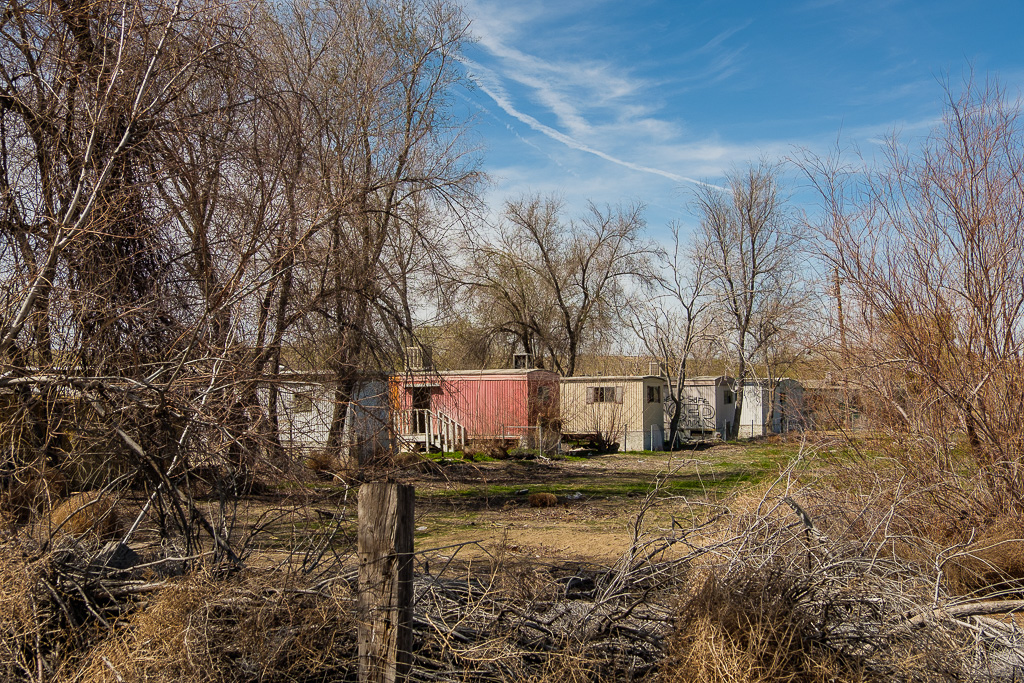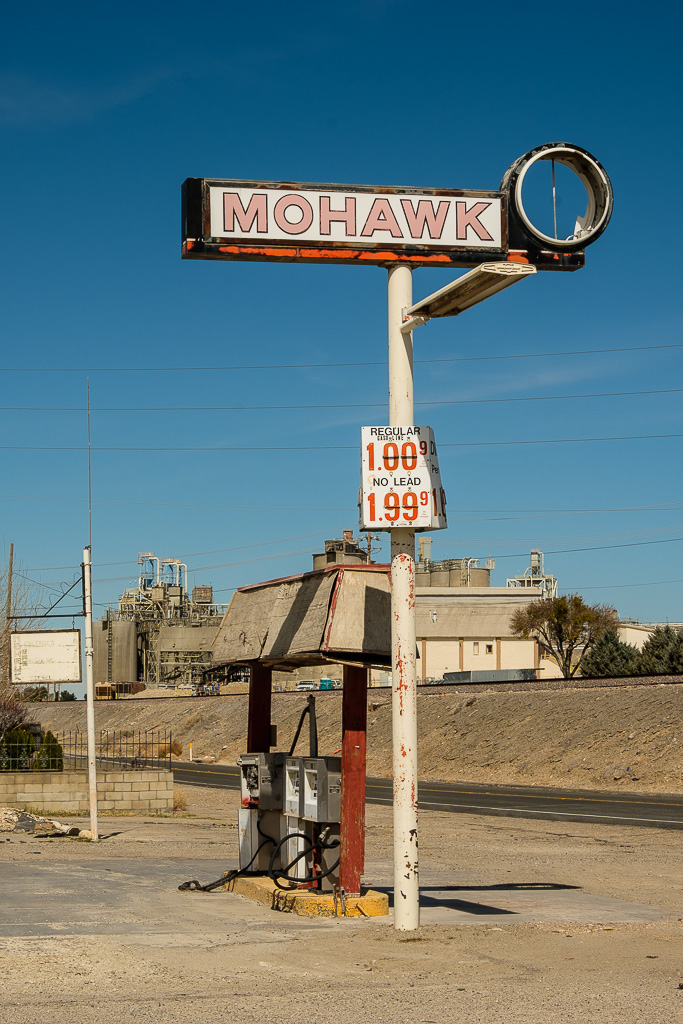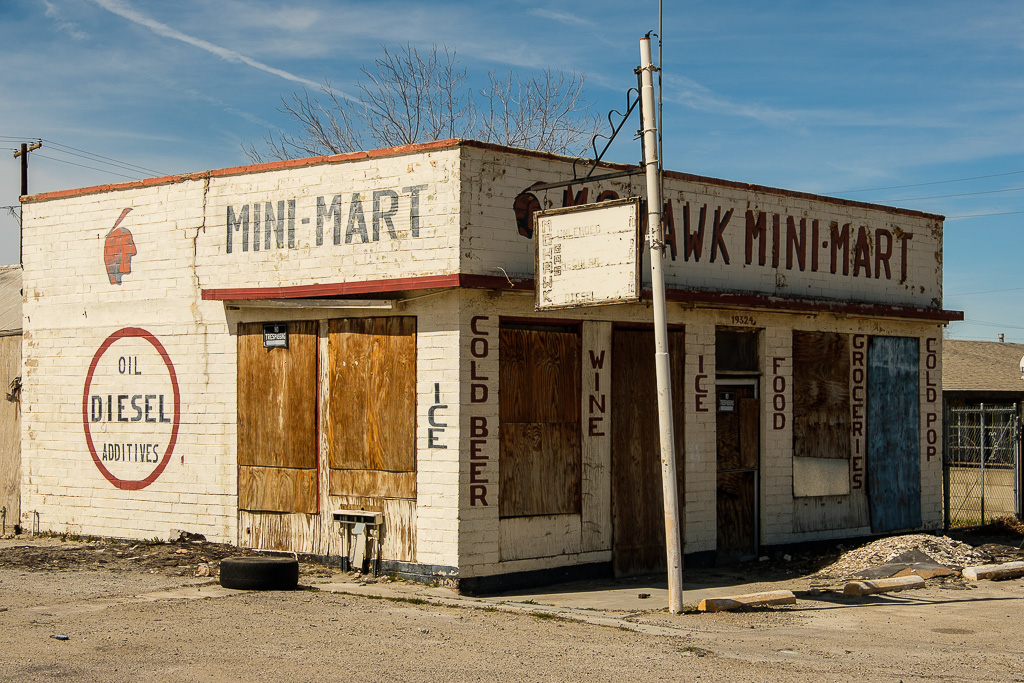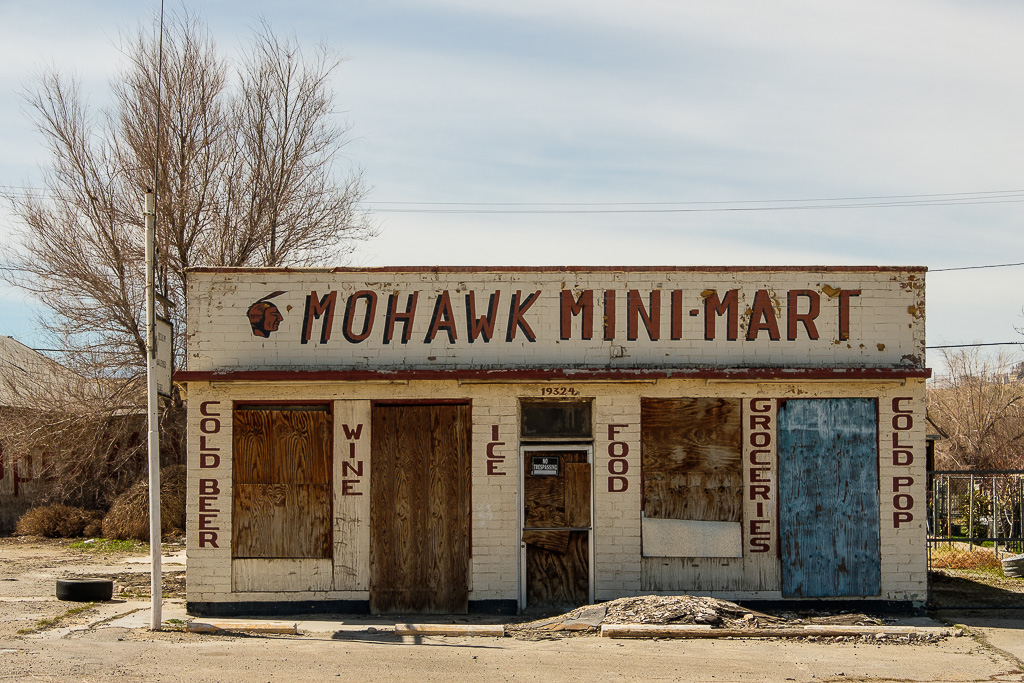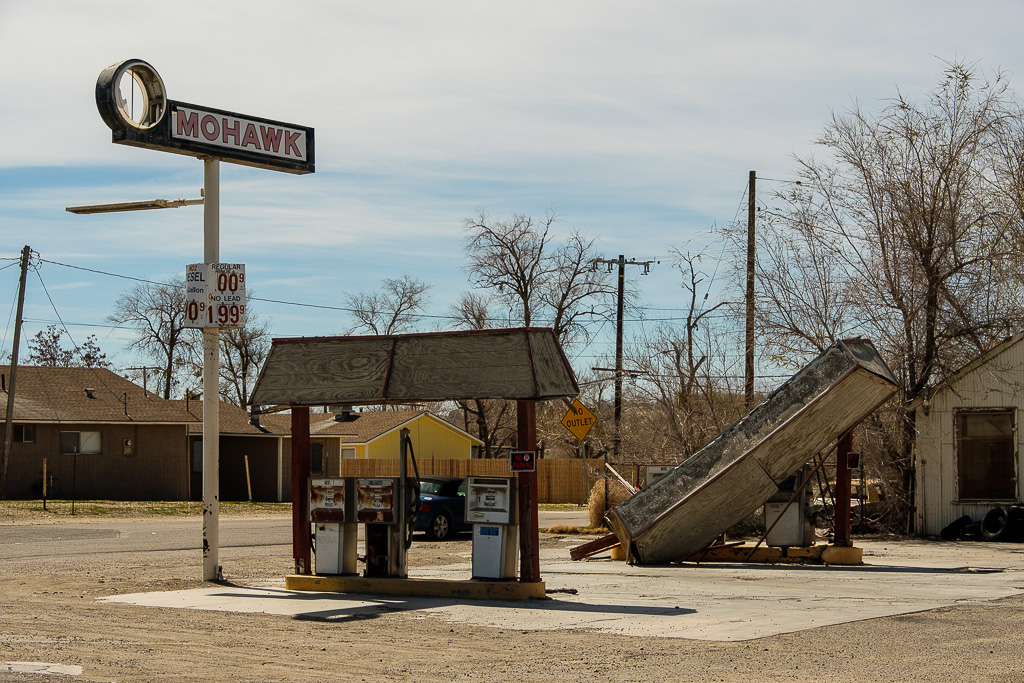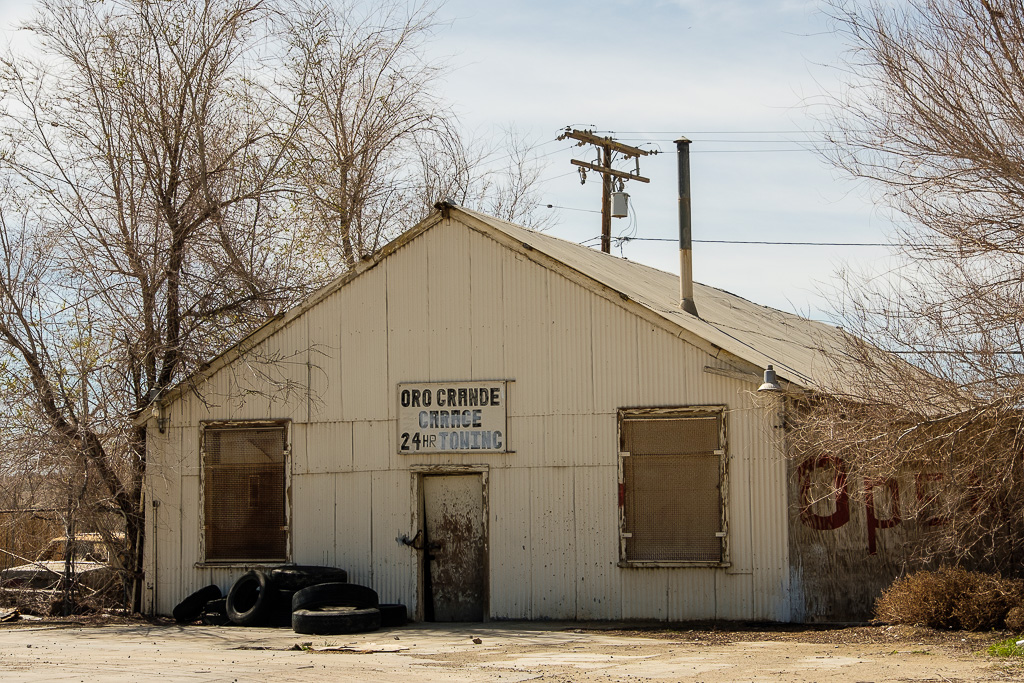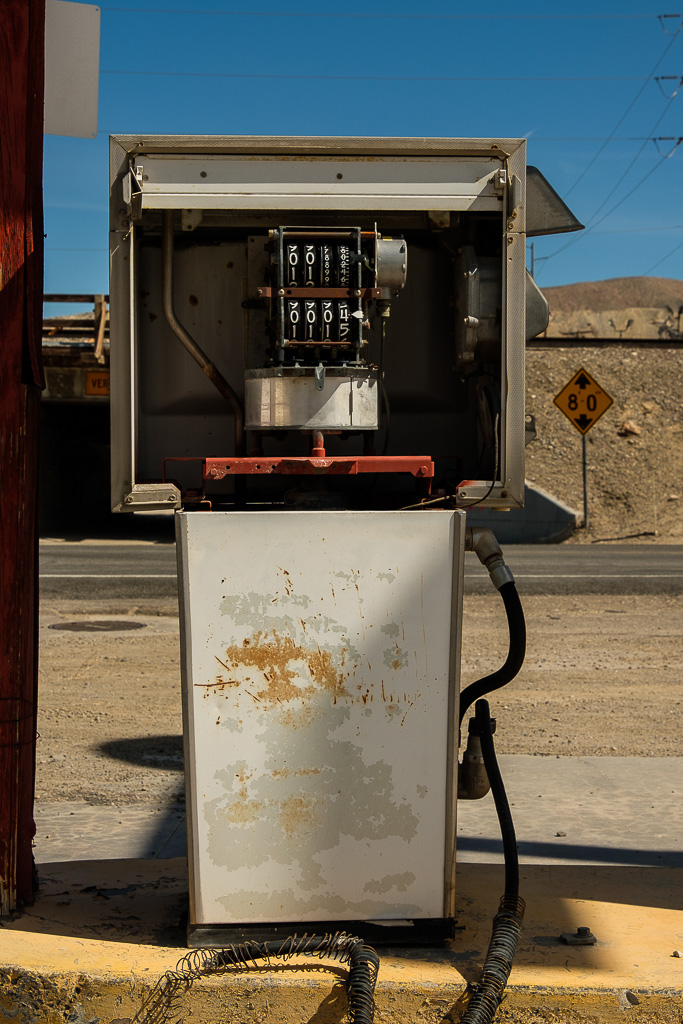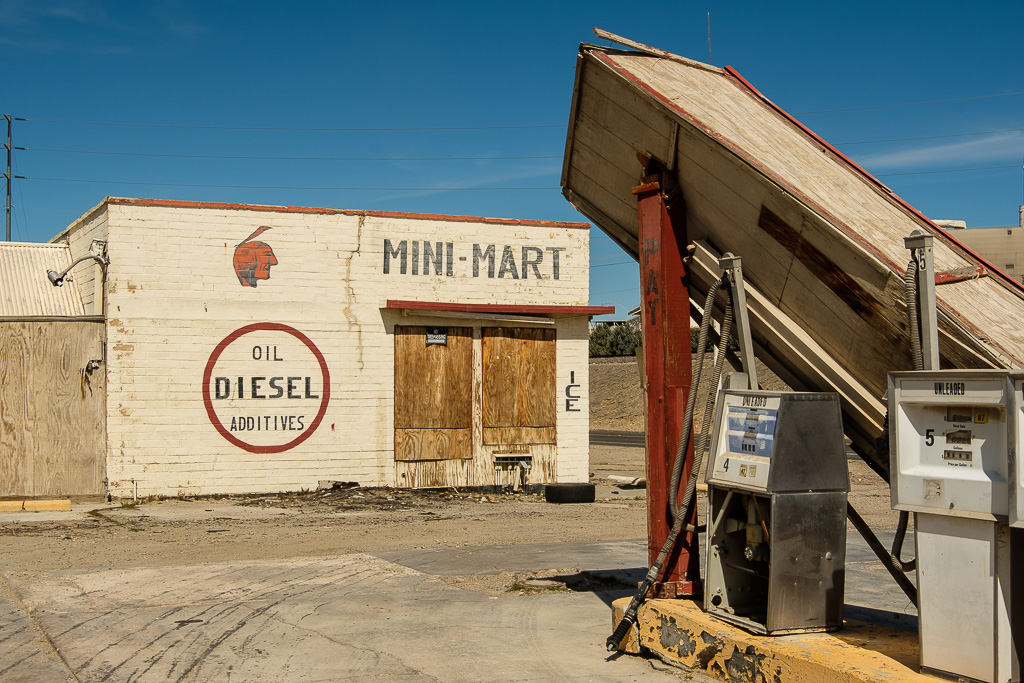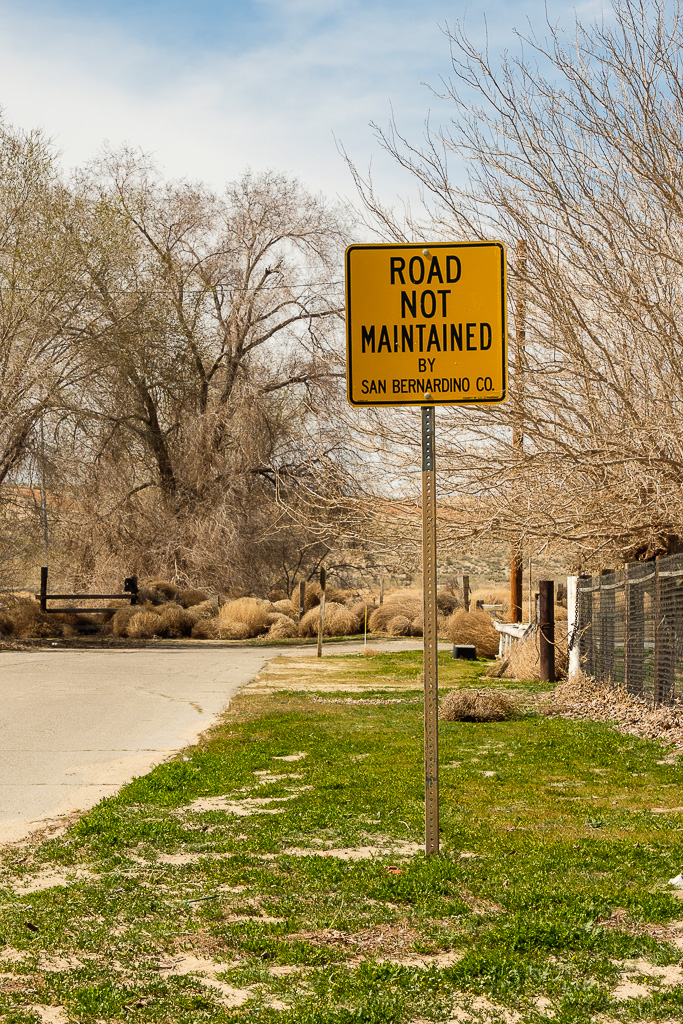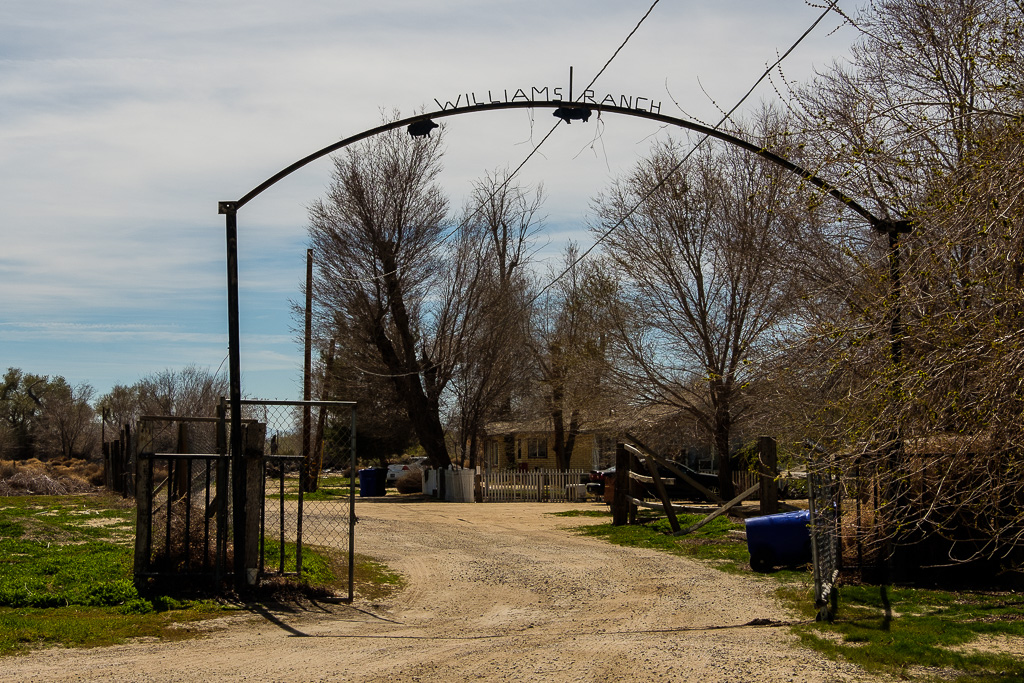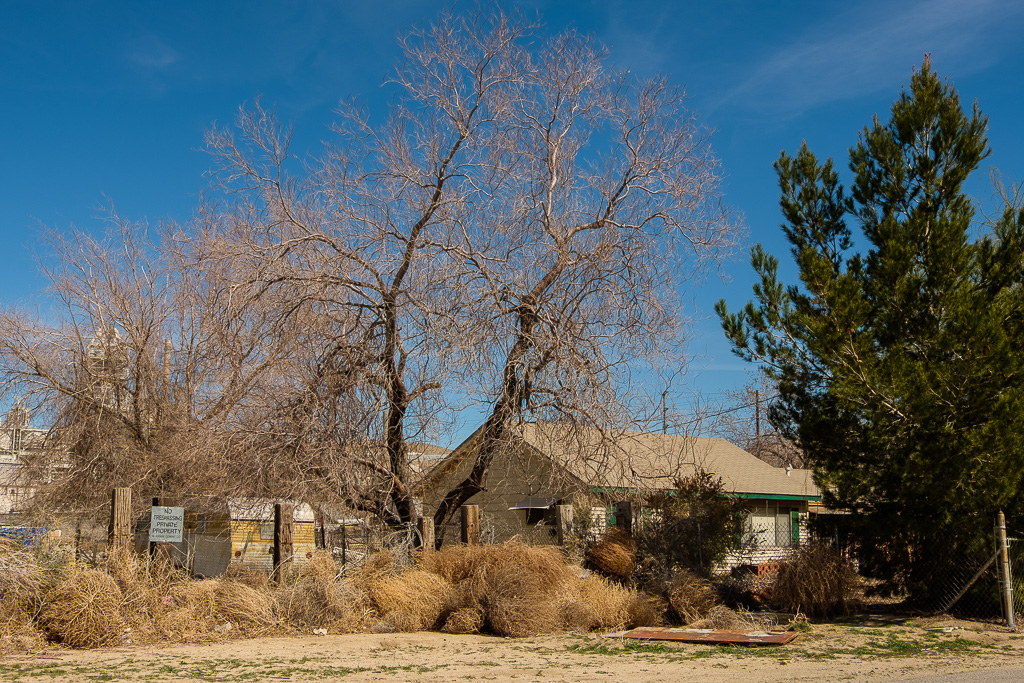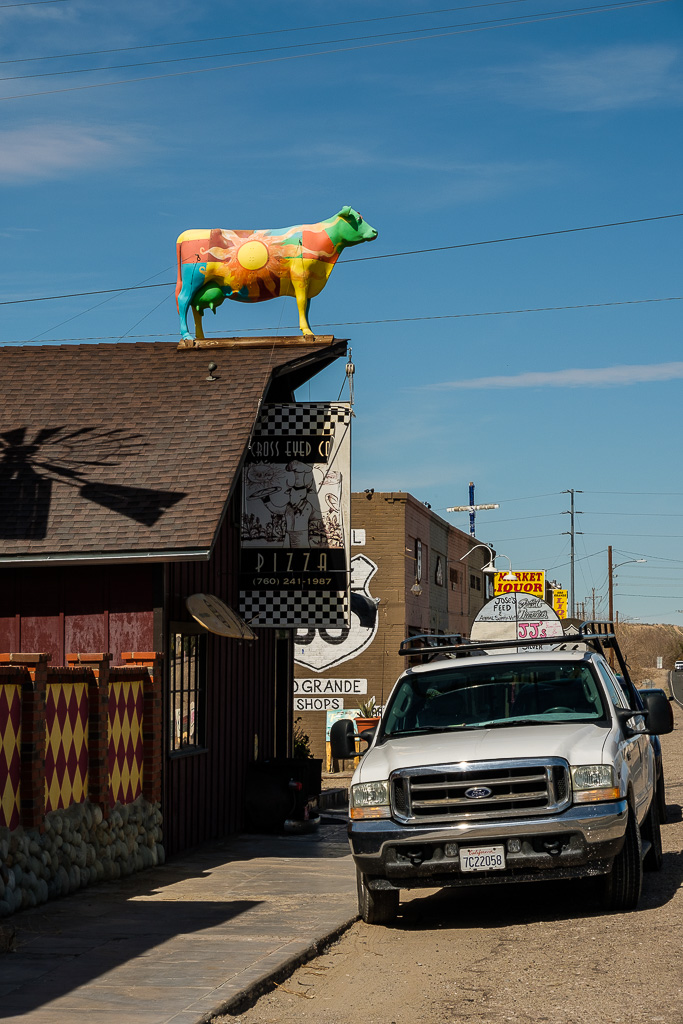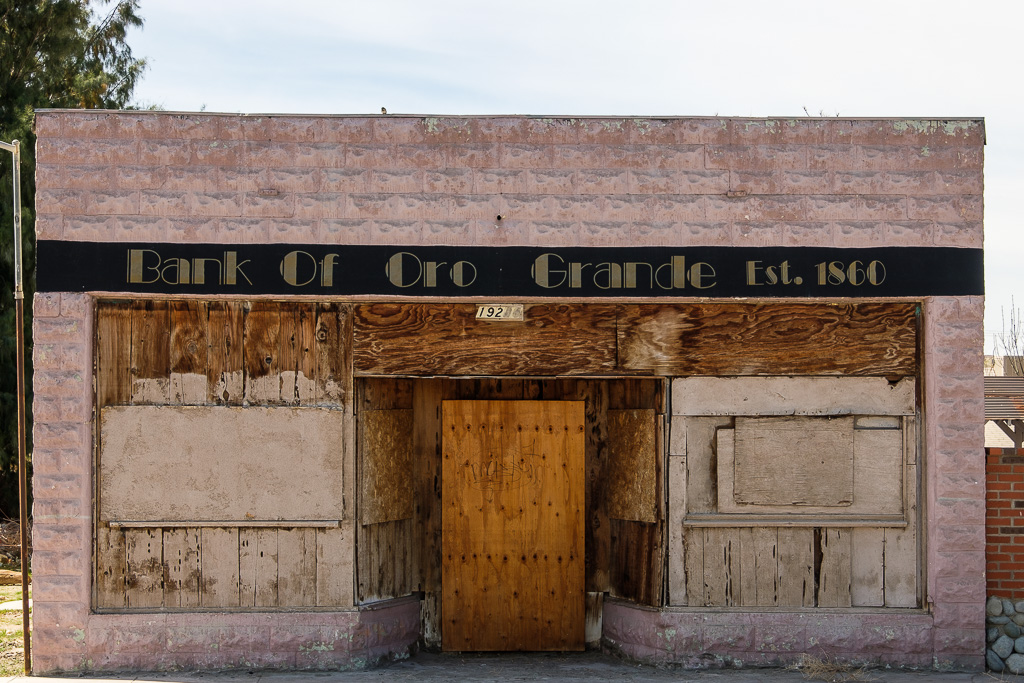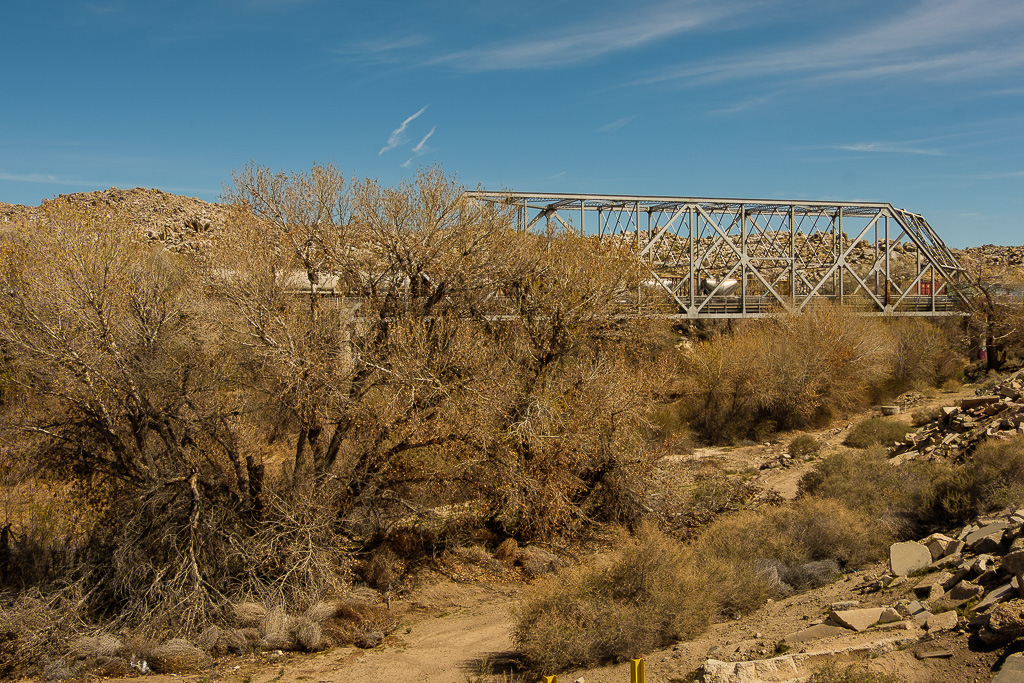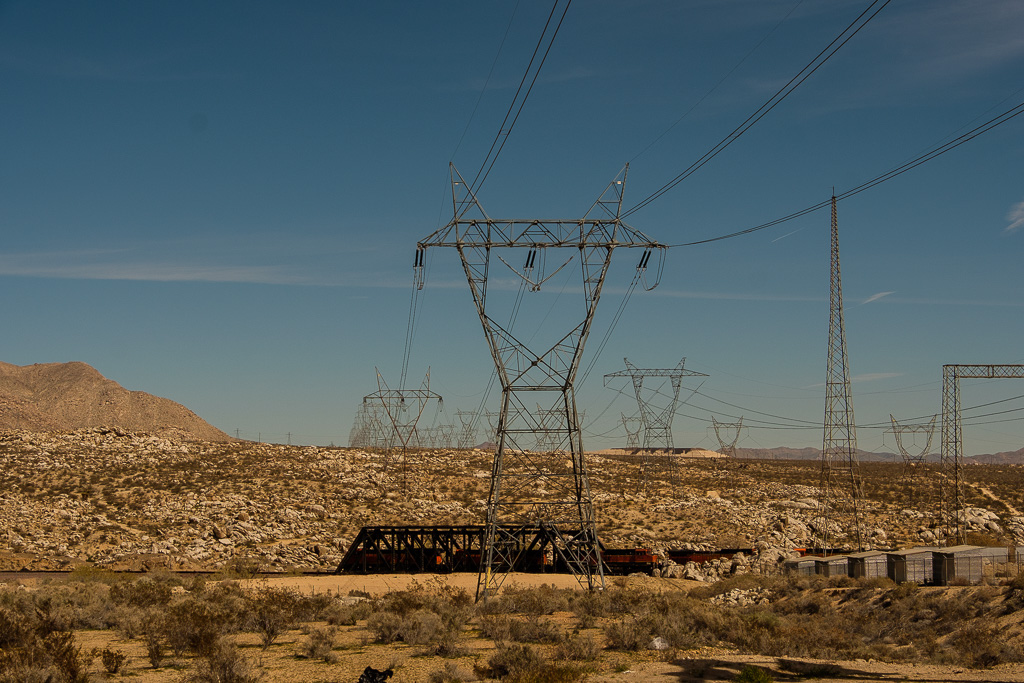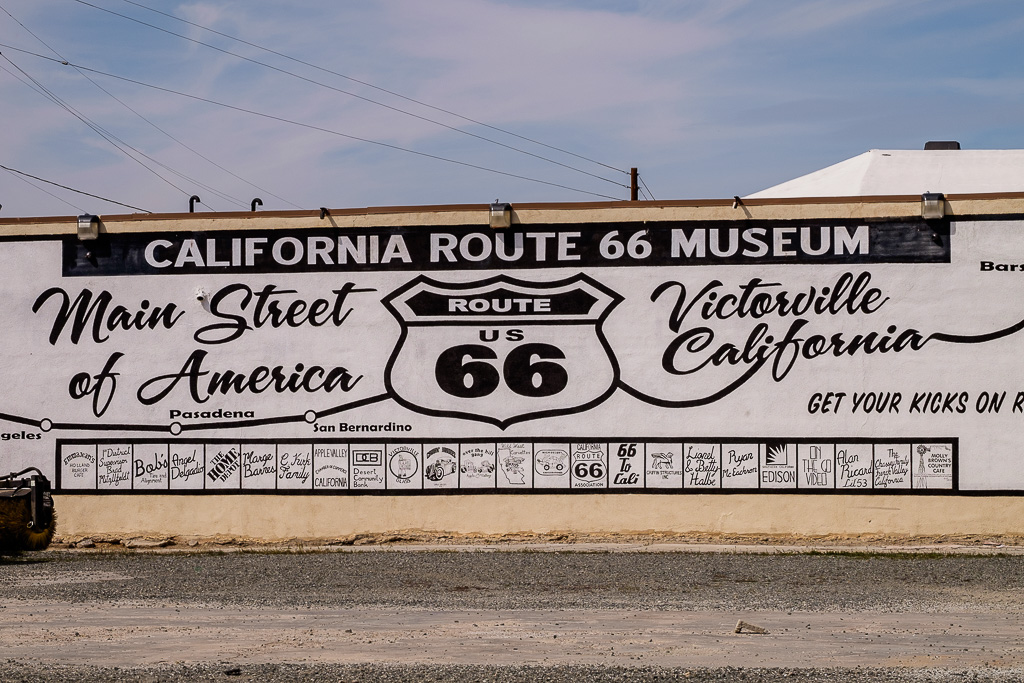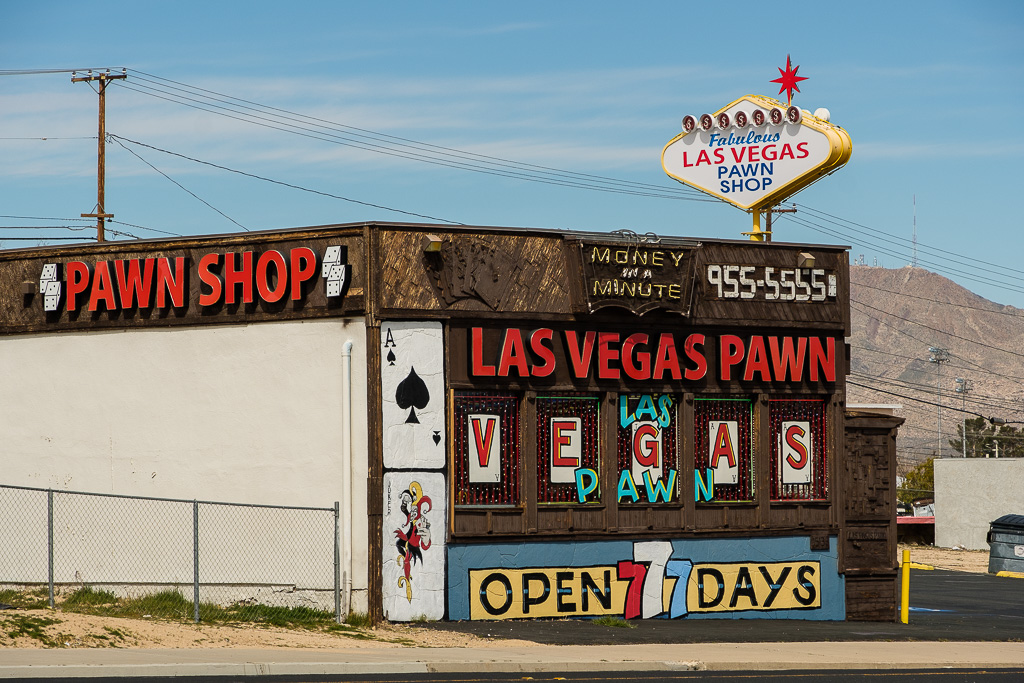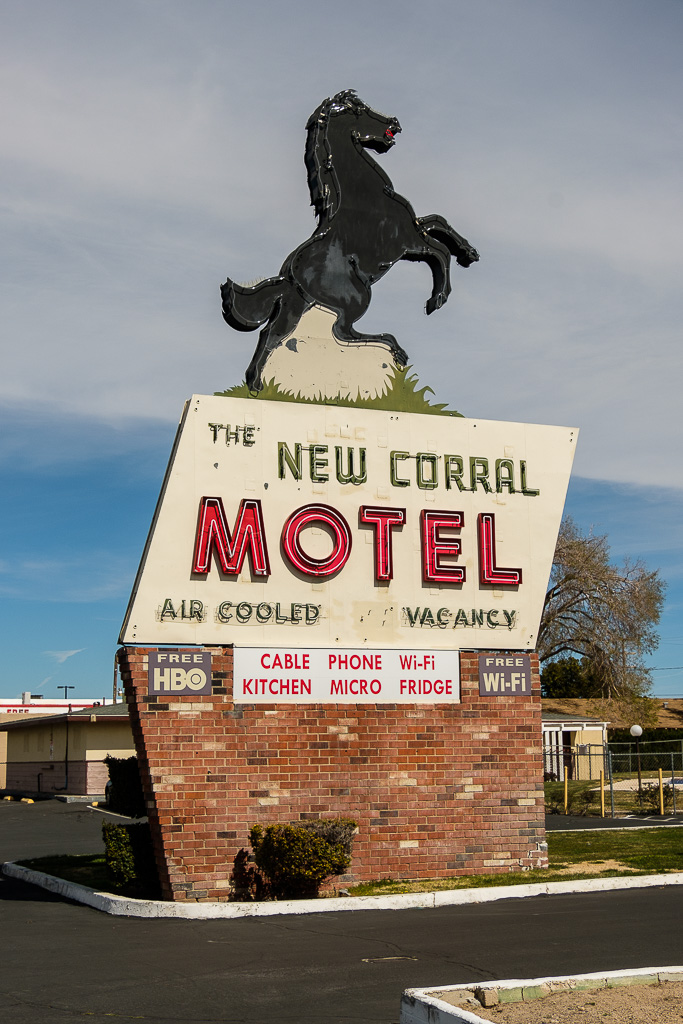 Crossing the Mojave on Route 66 in California. Barstow to Victorville, March 2017.
Crossing the Mojave on Route 66 in California. Barstow to Victorville, March 2017.
We will start out on the outskirts of Barstow at the “Casa del Desierto” – the Barstow Harvey House and Rail Depot. Remember La Posada in the Winslow AZ post? The El Tovar in the Village in the Grand Canyon post? Those were Harvey Houses, too. The Casa del Desierto in Barstow is only one of many hotels and restaurants built over the years by entrepreneur Fred Harvey along the Atchison, Topeka, and Santa Fe Railway lines; some were of great architectural distinction with many designed by Harvey Company architect Mary Colter. Casa del Desierto is a Colter as is, for example, La Posada in Wisnlow. English friends, Harvey was a Scouser. He was born in Liverpool and lived there until he was 15. Read more about the Casa del Desierto here.
Barstow was a hugely important and busy rail center during the heyday of passenger rail travel from the mid-1920s to mid-1950s with a lot of trains coming through there. The famed Super Chief from LA to Chicago ran through Barstow (as did many others). When the era of passenger rail travel was over, so was the Casa del Desierto…the BNSF Barstow Yard is there, and it’s still an important rail junction for freight, if not for passenger trains.
Although portions of the complex no longer exist – look at that mall mural to get a sense of the original layout – part of it has survived and has been restored. The Western America Railroad Museum and the Route 66 Mother Road Museum are both there. I wouldn’t call Barstow a destination on anyone’s car trip, but it is worth getting off the freeway for this attraction and a little bit of California history. Certainly, for me it was a good way to leave this challenged desert city on a high note.
Following up on some comments in the previous post, as can be seen in the balance of the photographs in this set (and the earlier post), with a couple of exceptions this is not a part of Route 66 with those shiny restored gas stations and the motels with vintage cars parked out front and Route 66 gift shops. If the Abandoned America photographic genre is your thing, this is the place. Ghost towns aplenty.
I saw lots more green desert on the drive; the March weather was mild. In my entire life I had never seen California desert landscapes so green. Imagine this landscape in the dry, blazing heat of the summer.
The place with all the bottles on posts is the bizarre and wonderful Bottletree Ranch in Oro Grande.
Victorville has a block or two with antiques places (mentioned in my Route 66 guide) but they were mostly boarded up. It was pretty uninviting, and I did not park. I did stop, however, at Los Alazanes (right on Route 66!) for some Mexican food for lunch. 7 on a scale of 10. Not a truly award winning Mexican dive but not bad at all, and I will give it an honorable mention. It’s right across the street from Fabulous Las Vegas Pawn – where one can get “money in a minute”. I can’t say that I fell in love with Victorville, but it is doing better than Needles and Barstow.
The New Corral in Victorville is a beauty of a motel. About a block after the New Corral I got off Route 66 to get on 395, and then took 58 west over the Tehachapis and through Bakersfield to Buttonwillow and I-5 north to the SF Bay Area. It was a green and flowering Central Valley as I had never seen it. Oh, my, the winter rains in California had worked wonders. Did you know the valley sank three feet during the drought? Today’s factoid. Anyway, the Route 66 Epic Road Trip was a wrap in Victorville.
We, however, will remain on Route 66 in the blogosphere for about another 100 miles from San Bernardino all the way to Santa Monica and the end of the road. I don’t want to end these posts on this down note so I am pulling some pix from the archives (mostly from my Route 66 prequel in 2016). Everyone, the California drive gets better. We will get over the mountains, as the Joads did, for the orange groves, Whittier, Pasadena, La La Land and the ocean. Hollywood and Beverly Hills, here we come. Stay tuned.

